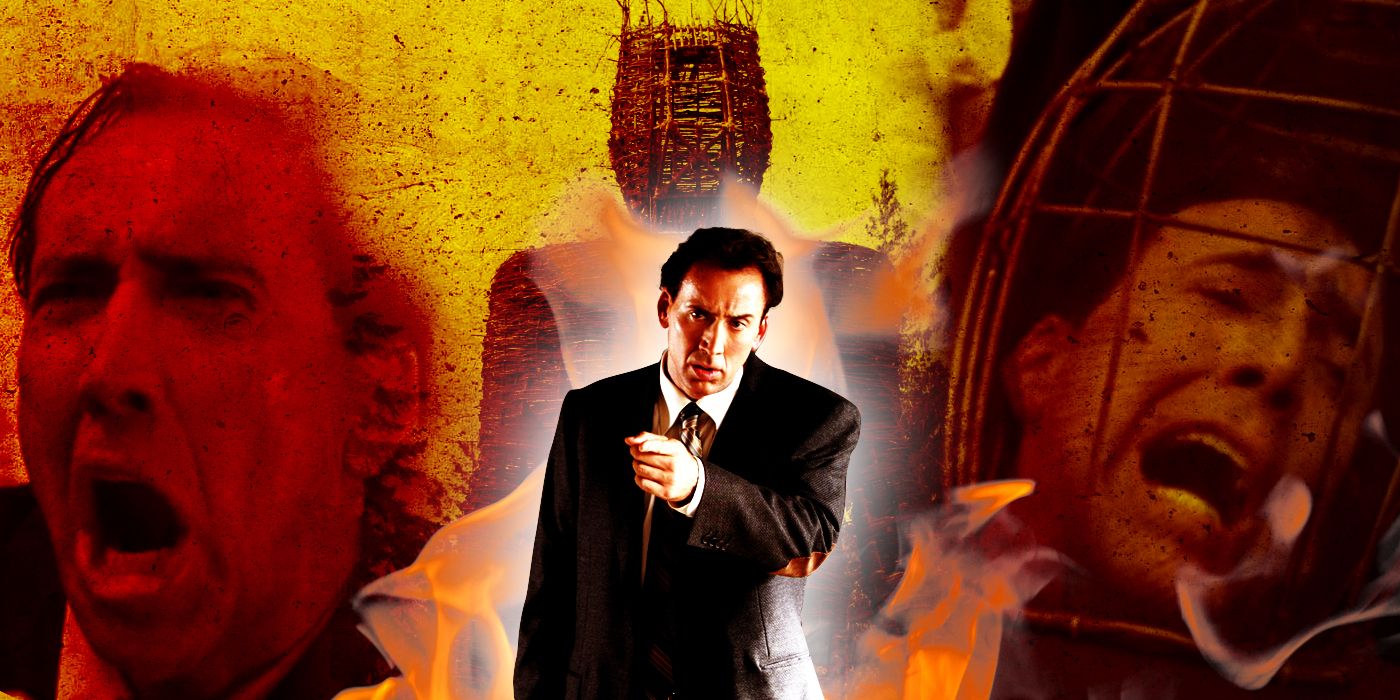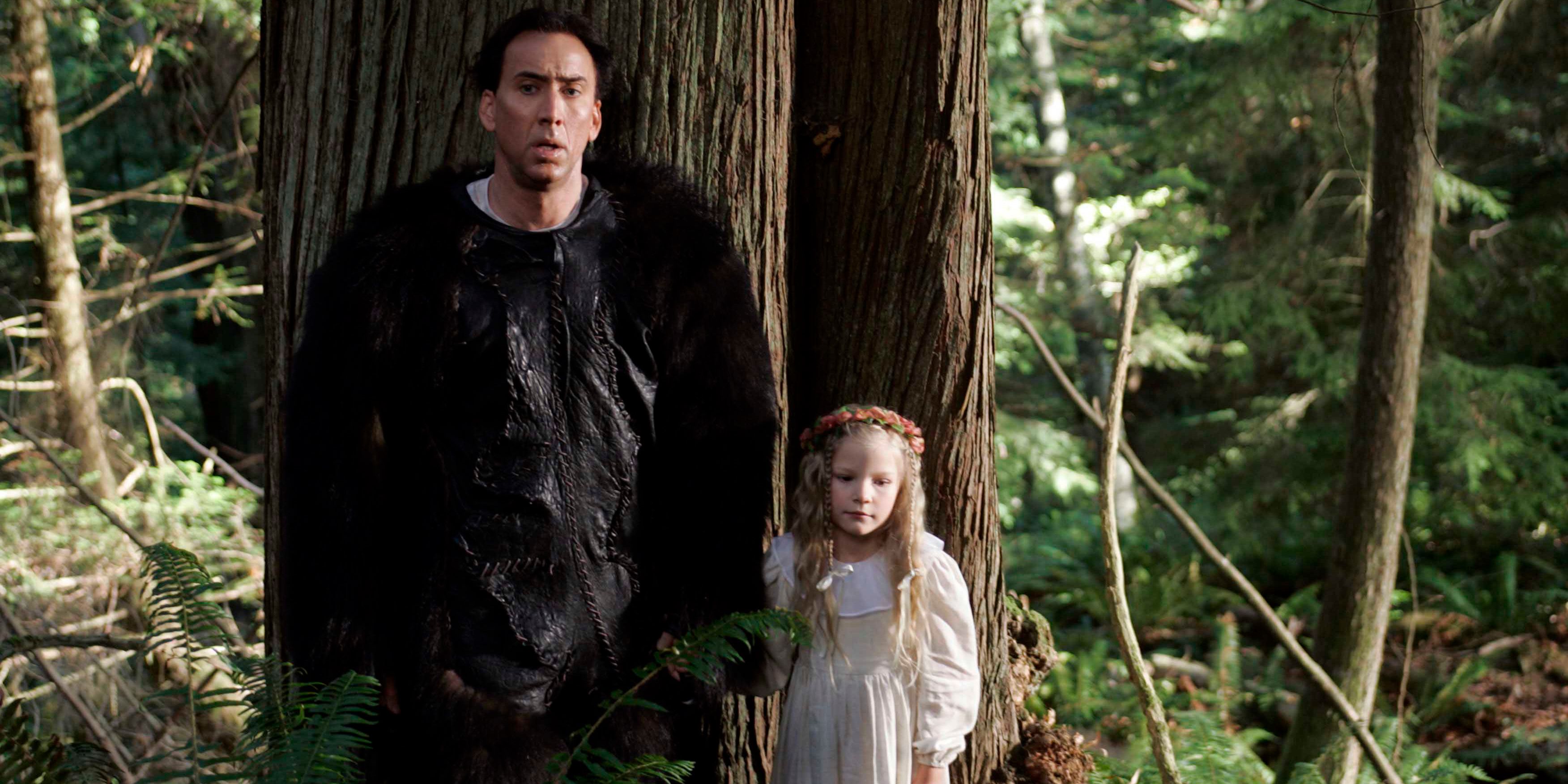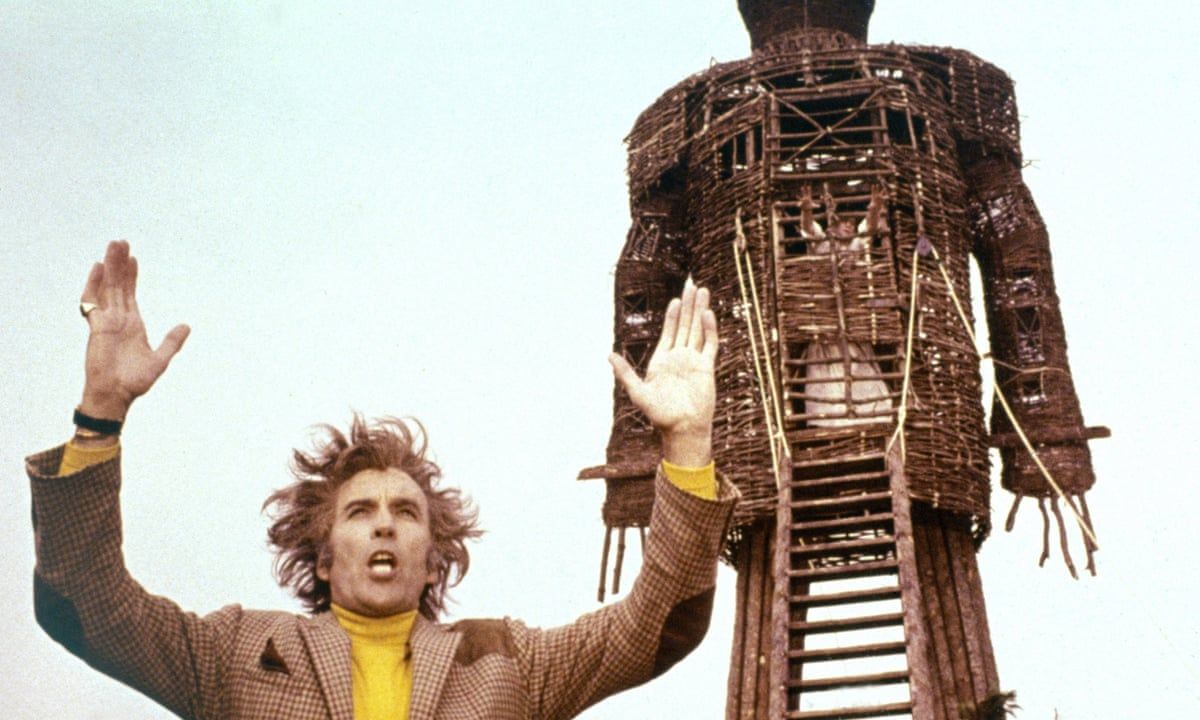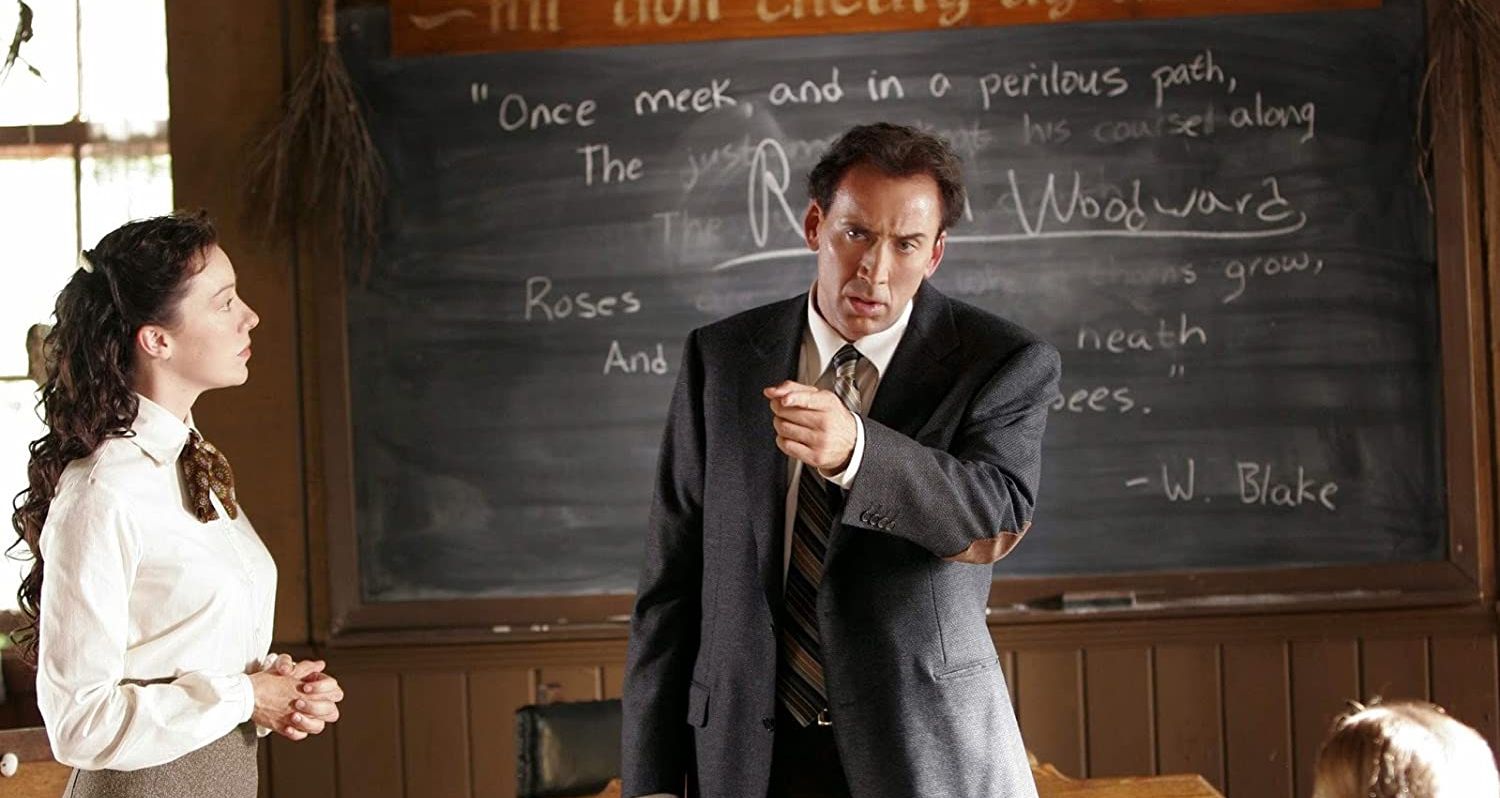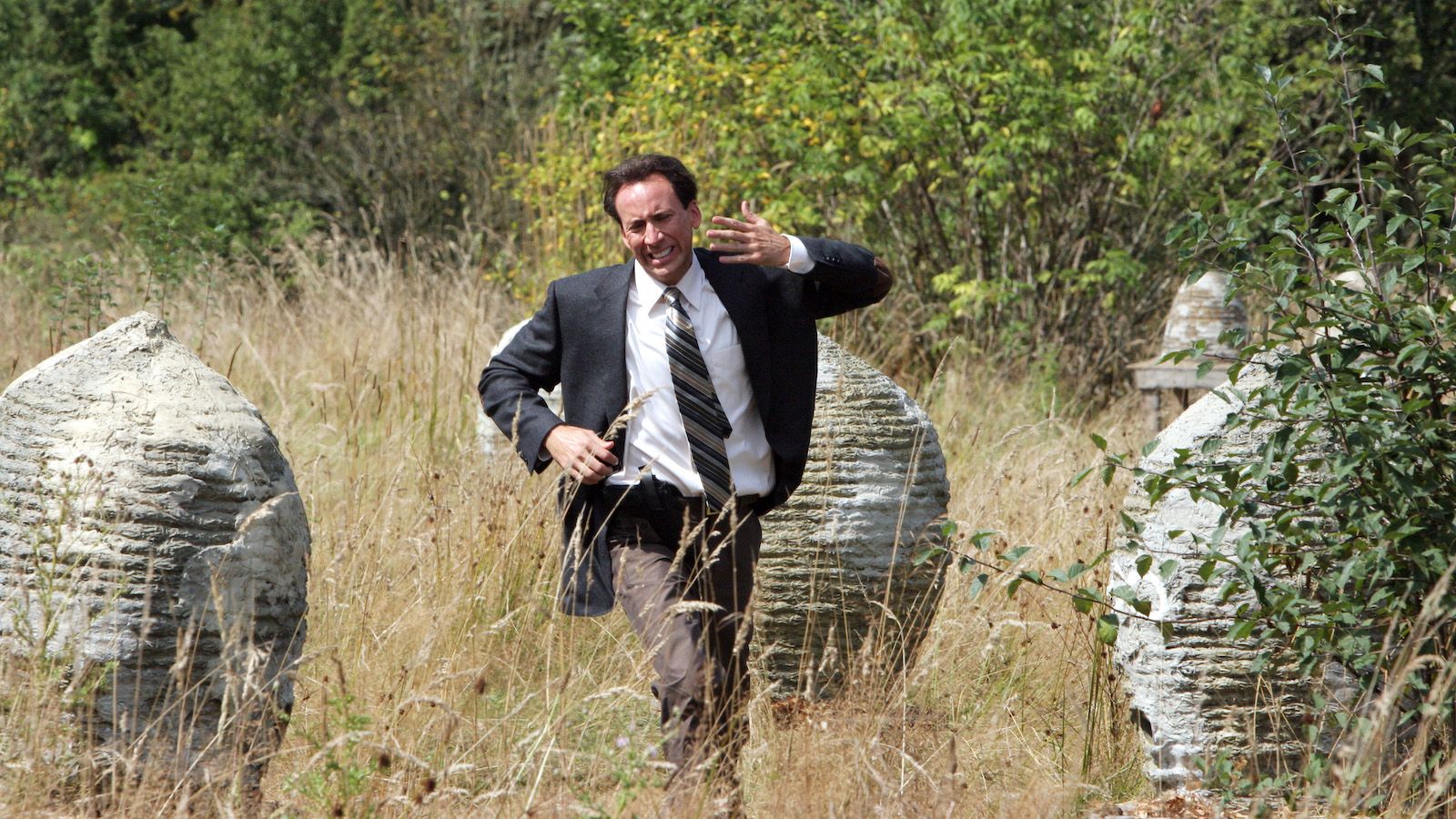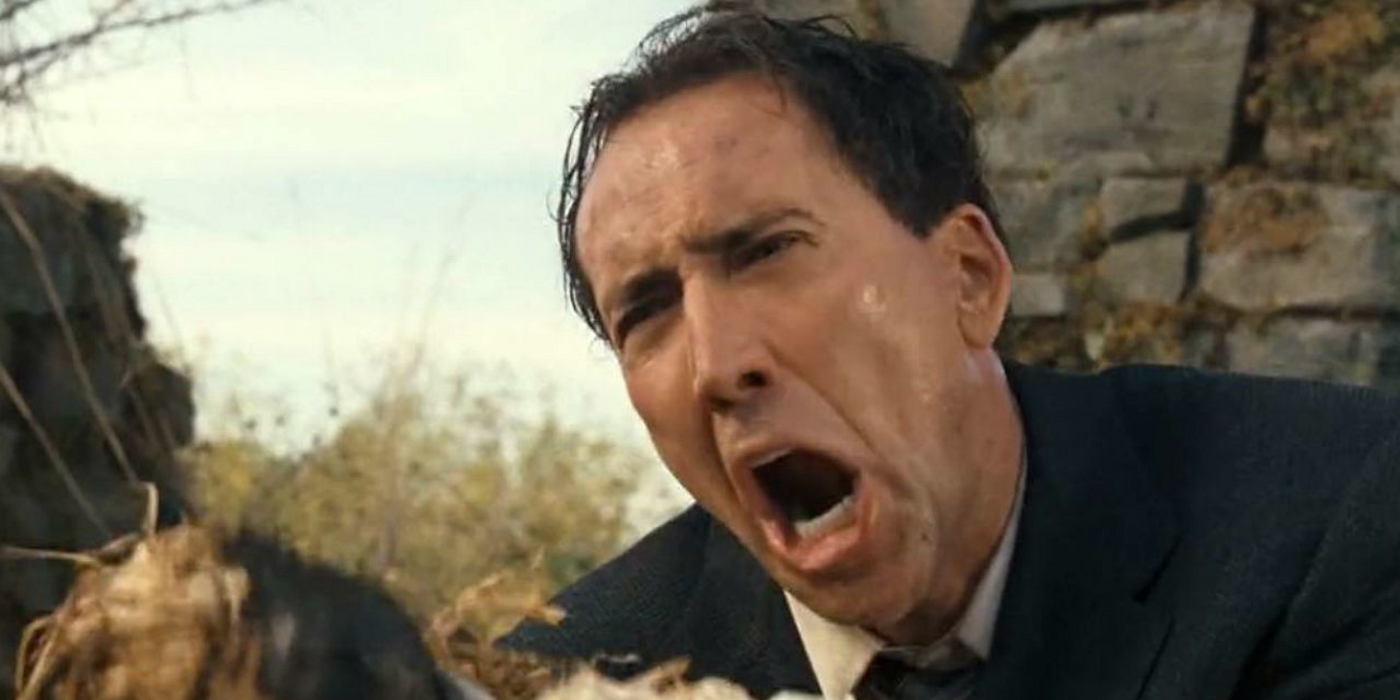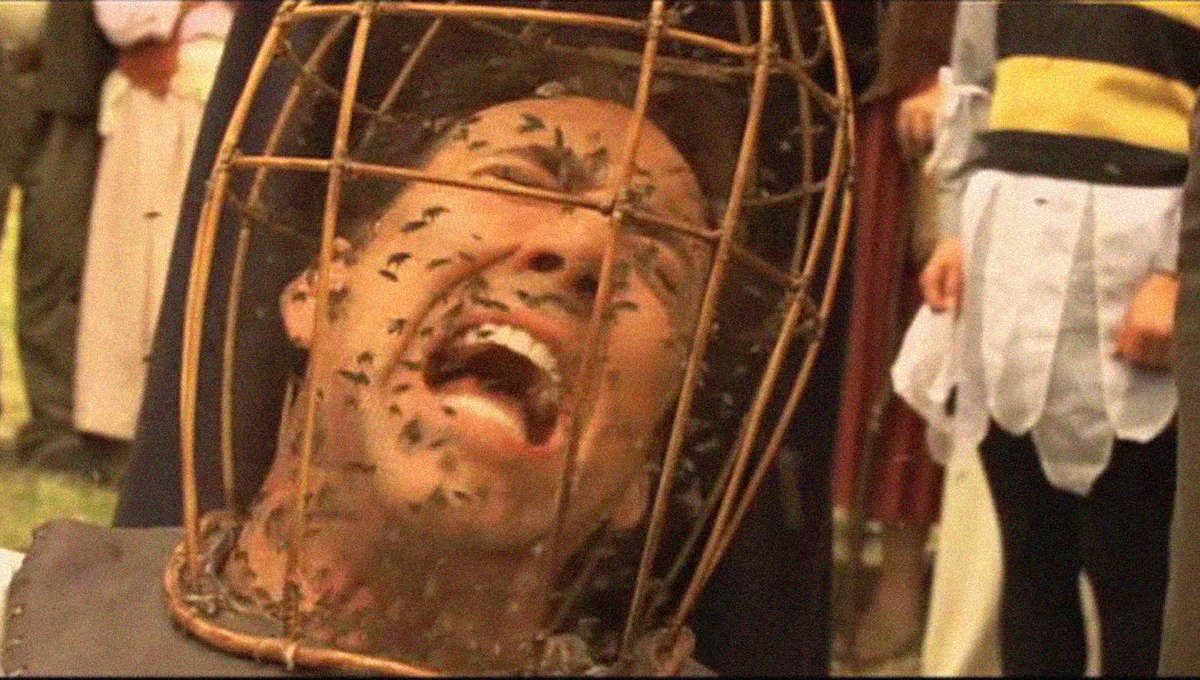Written and directed by Neil LaBute, the 2006 remake of The Wicker Man is infamous for being a terrible movie, and everyone knows why: it’s the poorly written script and Nicolas Cage’s insanely inconsistent line delivery, right? Well, yeah, but upon watching the 1973 cult classic that served as LaBute’s source material, one notices that the problem goes a lot deeper than wonky dialogues and poor acting choices.
LaBute’s Wicker Man is one of those movies that are so bad they’re good. Okay, maybe not exactly good, but definitely a must-watch on film nights with friends, preferably with beer and some sort of drinking game. It’s also the source of a couple of long-lasting internet memes.
In contrast, its 1973 counterpart, also titled The Wicker Man, is considered a cult classic. Directed by Robin Hardy and written by Anthony Shaffer, it’s one of the greatest examples of a subgenre of horror known as folk-horror. Both movies are loosely based on the 1967 novel Ritual, written by David Pinner. However, the ways Hardy and LaBute tell the story of a police officer investigating the disappearance of a young girl on an island populated by a pagan community couldn’t be more different from one another. And those differences are precisely what’s behind the trash fire that was the 2006 remake.
The 1973 version of The Wicker Man stars Edward Woodward as Neil Howie, a British police officer and a devout Christian that flies to the northern island of Summerisle after receiving an anonymous letter alerting him to the disappearance of young Rowan Morrison (Geraldine Cowper). Howie is received with suspicion by the locals, who claim to have never heard of the girl. Even May Morrison (Irene Sunters), Rowan’s alleged mother, tells Sergeant Howie she never had a daughter by that name.
Hardy’s is a strange, atmospheric horror movie that defies the limits of the genre: we could make the case that The Wicker Man is a musical and we wouldn’t be exactly wrong, considering the number of scenes in which characters break into song and dance. It’s an extremely bright film, to a point where even its spiritual remake, Ari Aster’s Midsommar, can be considered somber. Unlike most characters in horror movies, the people of Summerisle are more than happy with their way of life, and Lord Summerisle (Christopher Lee) is a kind leader beloved by all, which serves to emphasize the clash between Howie’s Christian worldview and the locals’ paganism.
Just from this brief summary, one can already see where LaBute chose to go another way. Cage’s Edward Malus is taken to Summerisle not by an anonymous message, but by a letter written by his ex-fiancée, Willow Woodward (Kate Beahan). A fusion of May Morrison and the seductress Willow (Britt Ekland) from the 1973 movie, Beahan’s character informs Malus that she has a daughter that has gone missing and that no one on the island is willing to help her. Upon his arrival, Malus finds out that the elusive Rowan (Erika Shaye Gair) is actually his daughter.
The overall vibe of the 2006 movie is also entirely different from the sunny, festive atmosphere of the 1973 version. LaBute’s Wicker Man is a very basic, dark horror movie, with gloomy settings and a pacing that constantly suggests something is wrong. While the people of the British Summerisle are happy and just trying to go about their daily business as Sergeant Howie throws accusations at them - to a point where the protagonist even becomes unsympathetic -, the islanders of the American Summerisle seem to live by the motto that “the creepier, the better”. Malus’ actions are always painted as justified, measured responses to a bunch of secretive villains that spend their days plotting something macabre. Or, at least, that’s how the women behave. The men simply have no agency - or tongues.
This deviation from the somewhat egalitarian, ‘free love’ Summerisle of 1973 can be explained by one word: parthenogenesis.
Parthenogenesis is a type of asexual reproduction that occurs in some animal species, like certain kinds of reptiles, ants, and bees. In parthenogenesis, the eggs aren’t fertilized by sperm. The concept is explained by Lord Summerisle to Sergeant Howie after the policeman witnesses a group of young women singing and jumping naked over a fire. The women, says Lord Summerisle, wish to be impregnated by the god of fire. “After all,” he continues, “what girl would not prefer a child of a god to that of some acne-scarred artisan?”
In a movie that ends with a man burning to death inside a human-shaped structure made of wicker to appease the sun god, what seems to have impressed Neil LaBute the most was the possibility of women reproducing without male assistance. And so his version of Summerisle became a misogynist’s idea of what a matriarchal society would be. Lord Summerisle is replaced by Sister Summerisle (Ellen Burstyn), who runs a bee-inspired community that has honey as its main produce.
The men in this society are second-class citizens who have their tongues cut off in order to remain silent at all times. Their only value is as breeders, given that humans cannot reproduce by parthenogenesis, even if they really like bees. This is made clear in the scene in which Malus interrogates the girls at the local school. In the 1973 movie, the girls are sitting in the classroom while the boys rehearse a dance around a maypole in the courtyard, singing a song about the circle of life. When asked by Miss Rose (Diane Cilento) what the maypole represents, the girls respond it’s a phallic symbol. In LaBute’s version of the story, there are no boys around, and it’s man that, in his purest form, is nothing but a phallic symbol.
In such a misandric setting, it isn’t Edward Malus’ religion that is challenged by the ways of the islanders, but his macho manners. Cage’s character is a violent, arrogant man that repeatedly disrespects Summerisle’s local customs. However, since the island is such a gloomy place, in which men are violated even in their most basic human rights, there is never a sense that Malus might be in the wrong, nor does he feel tempted by anything the community has to offer. Unlike Howie, whose principles are shaken by his desire for Willow, Malus is nothing but repulsed by what he sees.
Therefore, two things that do make sense in this bizarre worldbuilding exercise are Malus’ bee allergy and the infamous “Not the bees!” scene. Albeit one of the worst cases of overacting in film history, the scene would be a perfect conclusion for a movie that has bees as such an integral part. Likewise, Malus’ allergy is a perfect analogy to his misogyny: if the women are like bees, then he hates and feels threatened by both.
Unfortunately, the scene in which Malus is given the mesh helmet full of bees never made it to the movie’s theatrical cut, having been included only later in the unrated DVD. And, even then, Cage’s character isn’t left to die by bee stings à la Macaulay Culkin in My Girl. After being tortured with the bees and having his legs broken, Malus is dragged into the titular wicker man to burn.
This doesn’t make much sense in the version of Summerisle created by LaBute. Lord Summerisle and his subjects take Sergeant Howie to the wicker man because this was how the priests of ancient pagan religions performed their sacrifices. Though some of the rituals of the women of the 2006 movie are reminiscent of paganism, it’s not old European beliefs that inspired the new Summerisle, but the hierarchy of bees. And, at least as far as we know, bees don’t burn sacrifices in effigy, they just sting their prey.
It's ironic that, in a movie so harmed by all the changes it made to its source material, it's precisely the change they didn't make that puts the last nail in the coffin. Turning Summerisle into a dark matriarchal community and changing the protagonist from the devout Howie to Malus, a man that hardly has any personality besides being a cop allergic to bees, were terrible choices the movie's execution only made worse. Using bees as a tool in the final sacrifice instead of a wicker man, on the other hand, would only work to the plot's benefit. However, LaBute chose to preserve the story's original memorable ending, perhaps to keep the movie recognizable as a remake.
Make no mistake: ending the movie at the bee torture scene wouldn’t make it good. Though it would make more thematic sense, The Wicker Man would still be a terrible movie with all of the qualities that make it perfect for a good, old hate-watch. And, rest assured, we don’t even dream of denying the film’s status as a gem of bad cinema. However, upon closer examination, The Wicker Man presents much deeper flaws that stem mostly from a man’s difficulty to deal with the concept of parthenogenesis, and possibly with women as a whole. Though Hardy’s movie can be accused of being male-gazey and of exploiting female nudity, LaBute’s is a misogynistic tale with too many scenes of Nicolas Cage punching women, and, strangely, not enough bees.

